Paola Pivi exhibition at Rockbund Art Museum, Shanghai

From a leopard tip-toeing through 3,000 cappuccino cups, to goldfish flying to New Zealand on a plane - Milan-born multi-media artist Paola Pivi's work is instantly recognisable for the way it plays with the confines of reality. Enigmatically titled 'Share, But It's Not Fair', her first major solo exhibition in China - at Shanghai's Rockbund Art Museum (RAM) - offers a fascinating snapshot of her experiential playground through four large scale installations, two of which were specially created for the show.
The artist, who lives in Anchorage, Alaska, produces a wide range of paintings, installations, performances, photographs and videos. Unsurprisingly, her subversive representations of objects, animals and materials in provocative settings has brought her the most attention, making her one of the world's leading contemporary public sphere artists at the relatively young age of 41.
Although undeniably provocative, Pivi avoids the sensational-for-the-sake-of-it approach: the visually striking large scale installations on show at RAM are deeply thoughtful works and have been deliberately arranged in a sequence where one artwork subtly adds to the next, says the show's curator, RAM director Larys Frogier. The mesmerising 'Share, but it's not fair' is one of the artist's favourites, comprising 400 intertwined red and yellow pillows hung from the ceiling. 'The show is all about numbers,' explains Frogier: 'It is about thinking about the individual and collectivity - how to be an individual in a mass.'
Pivi's 'Untitled' - a 3.5 x 124 m enlargement of a drawing depicting a real scale aeroplane turned upside-down - makes an appearance on Huqiu Road. Created with New Zealander Dylan Horrocks, the drawing features new scenes which have been added especially for the exhibition. Closer examination shows passengers living their lives drinking, enjoying a picnic, practicing yoga, doing the laundry or walking the dog. 'All depict the global world made of differences and are a powerful critical allegory about how our global world is turned upside down with strange and absurd situations,' says Frogier.
RAM's interiors are perfect for large scale pieces like Pivi's 'It's a cocktail party,' a work from 2008 with different liquids such as red wine, orange juice, black ink, espresso coffee and facial tonic, pumped through nine 16ft-tall steel electrical pipes and then jettisoned loudly into a basin. Visitors, wearing protective raincoats, walk around the installation. 'The structure as a whole is also a rather impressive spatial installation, radiating massive power,' explains Paris-based Daphne Valroff of Galerie Perrotin (the gallery hosted Pivi's first solo exhibition in 2001). 'The artist creates improbable situations, to be experienced and experimented with. With her work, anything becomes possible.'
RAM is housed in a narrow six-storey Art Deco building in Shanghai's The Bund area. Restored by David Chipperfield Architects, it was originally home to the Royal Asiatic Society and China's first public art museum. The building forms part of an ensemble of architecturally diverse historic buildings on the northern Bund, called the Rockbund Project, and David Chipperfield Architects is part of a team of international architects commissioned by the Rockefeller Group to revitalise the area and restore the museum, among ten other buildings.
Inside the museum, with simple white walls and ceilings to form a calm backdrop, the design respects the dignity of the original Art Deco style: the elegant beige coloured terrazzo floor and black terrazzo wall panels in the historic staircase, and delicate black steel framed windows, have been meticulously restored. The original 1932 facade has been restored and a new building to the east provides an additional main entrance accommodating a range of different functions. The volume and natural lighting of the upper floors was also enhanced through the creation of a new atrium space across three floors.
Elegant signage throughout is by Hong Kong-trained graphic artist Alan Chan, while specially developed track lighting enables objects, images and walls to be illuminated according to specific exhibition needs. Meanwhile blackout window blinds provide low-tech control of daylight.
In this context the exhibit is a striking arrangement of shape, colour and lighting, without narration. Pivi says she prefers to give 'no direction on how to look at my work because I believe in total freedom of thought.' Instead images are more real than reality with fake bear rugs, pillows, liquids, sounds, drawings, lights, or dense collections of pearls conjuring a powerful tableau.
It is in this intense series of contradictory and complementary experiences that this tightly edited exhibition excels. Pivi's inspired perspective, combined with technical precision, leverages a magically compelling aesthetic that confirms she has her finger on the pulse of current concerns about life. Happily, the visual language she uses is not deliberately obfuscatory: most of the pieces are quirky yet intelligible, and always with a humorous touch.
We caught up with Pivi about Boeing 747s, Eskimos and everything in between.
How would you describe your work to someone who has never seen it before?
Usually I make grand things.
You've lived in China before. How did that experience affect your work?
Yes, in 1998 and 1999. I loved China. I probably know the Chinese culture intimately because I grew from a girl to a young woman while there.
There seems to a theme of alienation in your work. Do you feel out of place in your own world?
Only decades of experience have allowed me to find places where I do not feel alienated.
What do you think about before starting a project?
To live a life properly.
What do you want Chinese visitors to the exhibition to take away from this experience?
Great art.
How did you come to be an artist?
Lots of coincidences when I was 24 made me realise that what I am is defined by society as 'artist.'
If you weren't doing this, what other form of creative expression do you think you'd choose?
This is it.
What's the biggest professional lesson you ever learnt and how has it shaped your artistic career?
All is relative. Alighiero Boetti did not have enough shows before passing away and Mondrian took a break of eight years before the Boogie Woogie paintings... freedom...
What was the last thing you saw or experienced that got you creatively excited?
I am always creatively excited.
Name a designer or artist you admire and explain why?
Maurizio Cattelan, who just had a great show at the Guggenheim, and my husband, Culture Brothers. He is never scared.
What is your favourite medium or material to work with?
Boeing 747 airplane.
Is there any one thing that is common to all your work?
The only thing I can think of is an analysis of what we can do, of our power, in and out, like the power to handle a truck or to shape our thought.
How does the Alaskan design community differ from other places you have lived and worked? What made you decide to move there?
Inuit, Yupik, Inupiat, Athabascan, Aleut, Tinglit, and Eskimo: they are the best artists, dancers, story tellers and people.
What else are you working on at the moment?
A huge show at Castello di Rivoli and Witte de With.

Pivi's exhibition at RAM, titled 'Share, But It's Not Fair', is her first major solo show in China. The museum is housed in a narrow six-storey Art Deco building in the city's Bund area. Recently restored by David Chipperfield Architects, it was once home to the Royal Asiatic Society and China's first public art museum.

'Untitled' (vases) by Paola Pivi, 2010

'Thank you ocean' by Paola Pivi, 2003

'It's a cocktail party' by Paola Pivi, 2008

'It's a cocktail party' by Paola Pivi, 2008
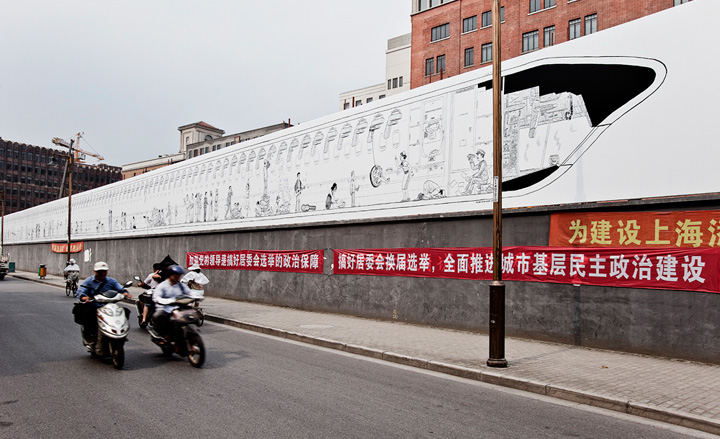
'Untitled' by Paola Pivi and Dylan Horrocks, 2009-12.
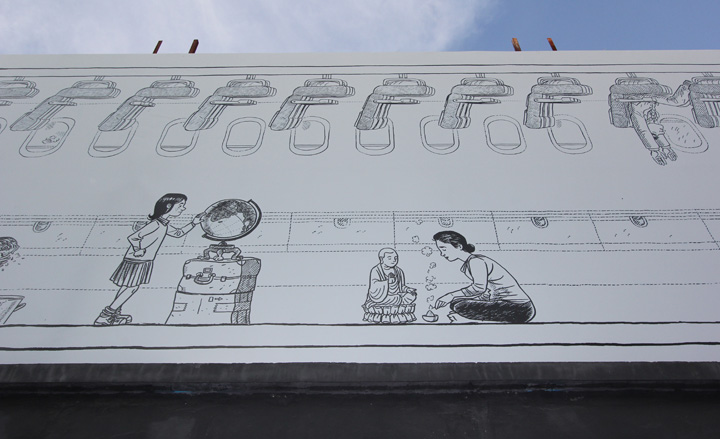
'Untitled' by Paola Pivi and Dylan Horrocks, 2009-12.

'Crazy ball' by Paola Pivi, 2011.

'Triptych' by Paola Pivi, 2012.

'Share, but it's not fair' by Paola Pivi.
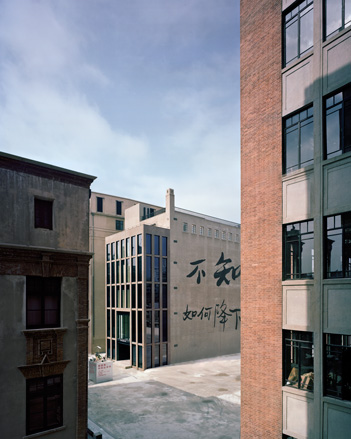
RAM forms part of an ensemble of architecturally diverse historic buildings on the northern Bund, called the Rockbund Project.

David Chipperfield is one of a team of international architects commissioned by the Rockefeller Group to revitalise the area and restore the museum, as well as ten other buildings.

An aerial view towards the Bund and the Rockbund Project.

The interior of RAM has been renovated with respect to the dignity of the original Art Deco style. Pictured is the reception area on the first floor.

Pictured here is the second floor foyer.
The building's original 1932 facade has been restored and a new building addition to the east provides an additional main entrance accommodating a range of different functions.

Pictured here is the fifth floor atrium exhibition hall, featuring artwork by Cai Guo-Qiang.
The volume and natural lighting of the upper floors was additionally enhanced through the creation of a new atrium space across three floors.
Receive our daily digest of inspiration, escapism and design stories from around the world direct to your inbox.
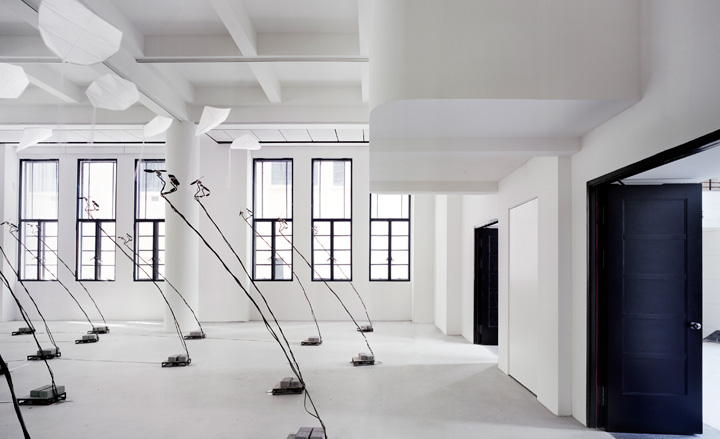
The delicate black steel framed windows, which have been meticulously restored, form the backdrop for Cai Guo-Qiang's artwork in the second floor exhibition hall.

The elegant signage, visible throughout the museum, has been designed by Hong Kong-trained graphic artist Alan Chan
ADDRESS
Rockbund Art Museum
No.20 Huqiu Road
Huangpu District, Shanghai
Catherine Shaw is a writer, editor and consultant specialising in architecture and design. She has written and contributed to over ten books, including award-winning monographs on art collector and designer Alan Chan, and on architect William Lim's Asian design philosophy. She has also authored books on architect André Fu, on Turkish interior designer Zeynep Fadıllıoğlu, and on Beijing-based OPEN Architecture's most significant cultural projects across China.
-
 Samuel Collins’ stone sculptures capture the raw and rugged nature of the British landscape
Samuel Collins’ stone sculptures capture the raw and rugged nature of the British landscapeThe British artist and sculptor presents 'Silence Split', a series of stone sculptures which presents an abstract take on the horizontal and vertical landscape
-
 Houston's Ismaili Centre is the most dazzling new building in America. Here's a look inside
Houston's Ismaili Centre is the most dazzling new building in America. Here's a look insideLondon-based architect Farshid Moussavi has created a new building open to all – and in the process, has created a gleaming new monument
-
 A postcard from Irish Design Week 2025
A postcard from Irish Design Week 2025How Ireland's collaborative design culture, from Kilkenny's 60-year legacy to island circularity offers an expansive model for the future
-
 Out of office: what the Wallpaper* editors have been up to this week
Out of office: what the Wallpaper* editors have been up to this weekThis week saw the Wallpaper* team jet-setting to Jordan and New York; those of us left in London had to make do with being transported via the power of music at rooftop bars, live sets and hologram performances
-
 Miami’s new Museum of Sex is a beacon of open discourse
Miami’s new Museum of Sex is a beacon of open discourseThe Miami outpost of the cult New York destination opened last year, and continues its legacy of presenting and celebrating human sexuality
-
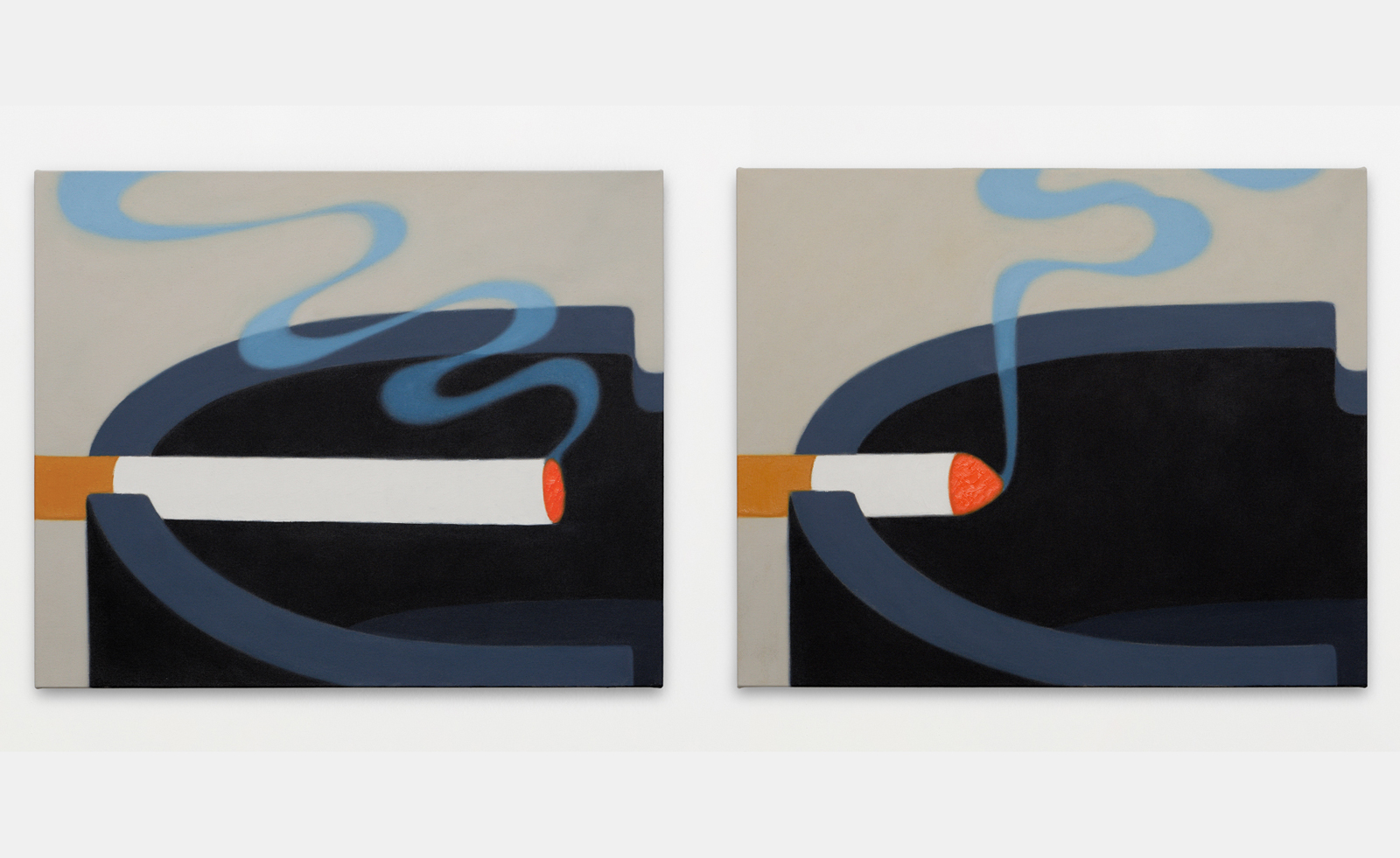 Henni Alftan’s paintings frame everyday moments in cinematic renditions
Henni Alftan’s paintings frame everyday moments in cinematic renditionsConcurrent exhibitions in New York and Shanghai celebrate the mesmerising mystery in Henni Alftan’s paintings
-
 Cui Jie revisits past utopian architectures in her retro-futuristic cityscapes
Cui Jie revisits past utopian architectures in her retro-futuristic cityscapesCui Jie responds to the ‘Cosmos Cinema’ theme of the Shanghai Biennale 2023
-
 Royal College of Physicians Museum presents its archives in a glowing new light
Royal College of Physicians Museum presents its archives in a glowing new lightLondon photography exhibition ‘Unfamiliar’, at the Royal College of Physicians Museum (23 January – 28 July 2023), presents clinical tools as you’ve never seen them before
-
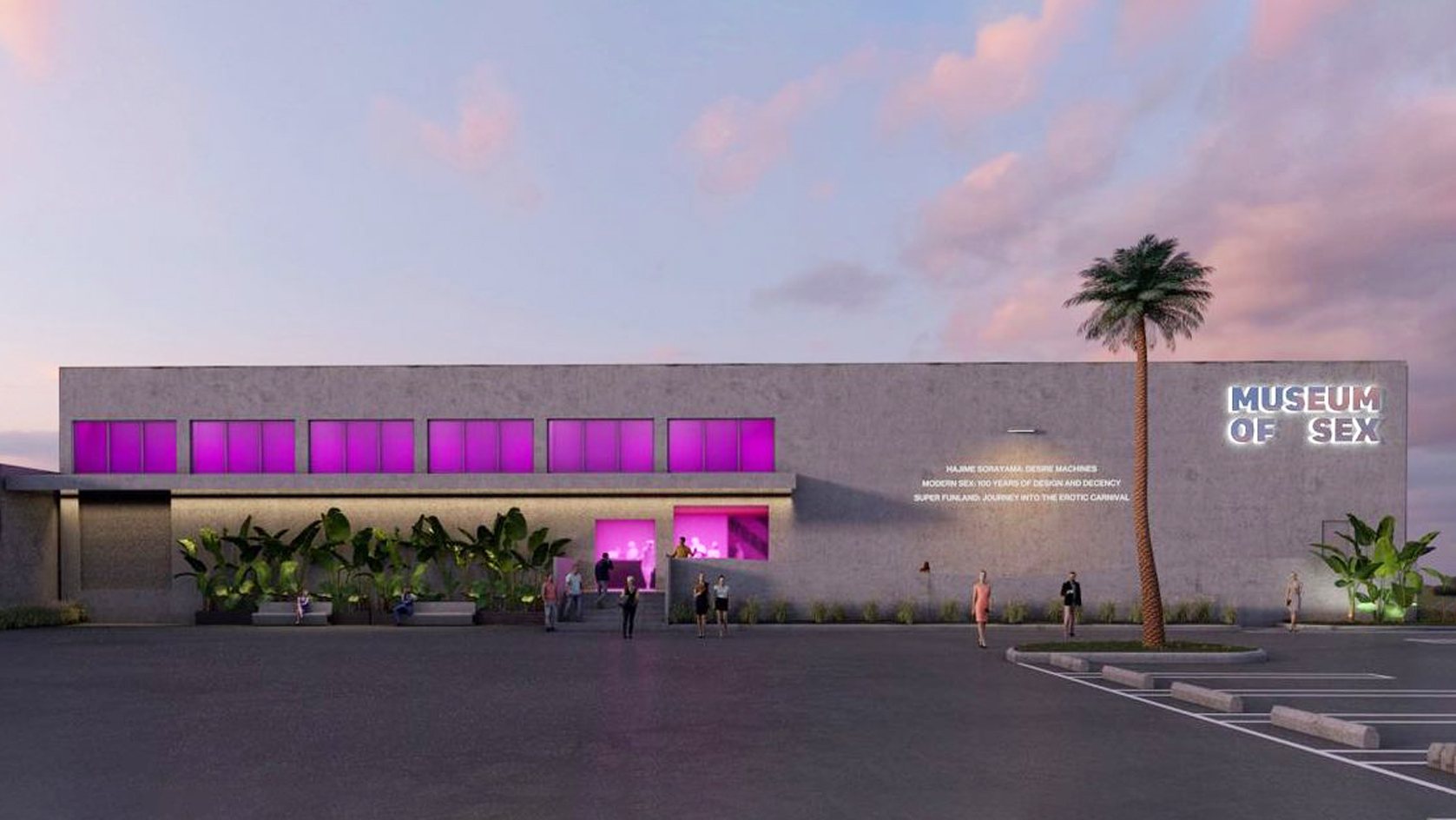 Museum of Sex to open Miami outpost in spring 2023
Museum of Sex to open Miami outpost in spring 2023The Museum of Sex will expand with a new Miami outpost in spring 2023, housed in a former warehouse reimagined by Snøhetta and inaugurated with an exhibition by Hajime Sorayama
-
 Jenny Holzer curates Louise Bourgeois: ‘She was infinite’
Jenny Holzer curates Louise Bourgeois: ‘She was infinite’The inimitable work of Louise Bourgeois is seen through the eyes of Jenny Holzer in this potent meeting of minds at Kunstmuseum Basel
-
 ‘A Show About Nothing’: group exhibition in Hangzhou celebrates emptiness
‘A Show About Nothing’: group exhibition in Hangzhou celebrates emptinessThe inaugural exhibition at new Hangzhou cultural centre By Art Matters explores ‘nothingness’ through 30 local and international artists, including Maurizio Cattelan, Ghislaine Leung, Hiroshi Sugimoto, Liu Guoqiang and Yoko Ono